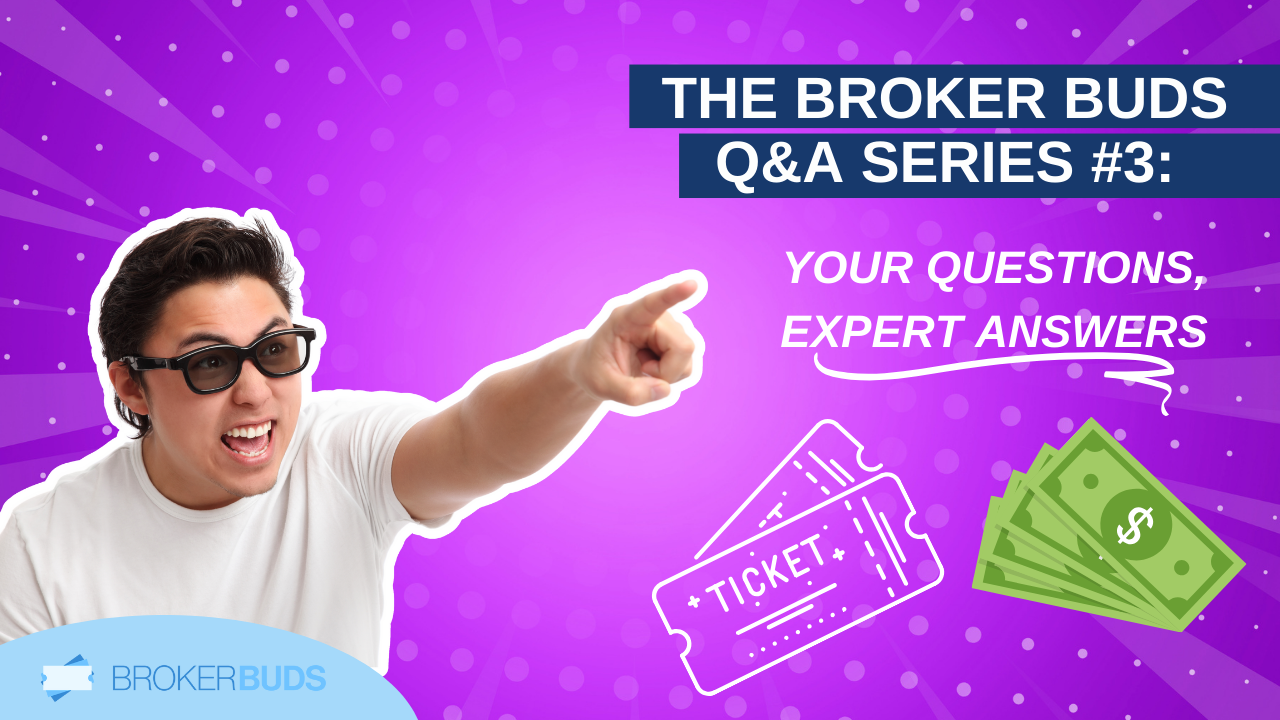
Dear Readers,
We're back with another edition of the Broker Buds Q&A Series, where we address the burning questions that will help drive your business forward. As your partners in success, we're dedicated to providing you with the knowledge and strategies you need to thrive in the dynamic world of ticket brokering.
In this edition, we're diving into the top four inquiries that have landed in our inbox. Your questions reflect the pulse of the ticket brokering industry, and our mission is to equip you with actionable insights and valuable perspectives. Let's jump right into it:

Every exchange will have slightly different rules, but generally speaking replacements must be in the same section, and the row must be within 5 rows better of what you sold. For example if you sold tickets in section 223 row 15, you must replace them with tickets in section 223 rows 11-15.
Most of the time, if you offer replacements that are objectively better than the tickets you sold, the customer won't have a problem with it. Same goes for mirror sections in equal or better rows. But you will need permission from the exchange/customer and the customer does have the right to reject your replacement offer.

Unless you have inside information, knowing where an artist is going to add shows is virtually impossible. However, there are several clues and data points that guide us in making educated guesses about where an artist may add shows.
First and foremost, scanning through an artist's list of tour dates can reveal whether a tour schedule is "tight" or has many gaps in between. If there are gaps and demand is high, there is potentially a risk of show adds.
The next step would be to check the venues' schedules to see if the venue is booked with other acts, or has availability to accomodate a potential show add.
Lastly, we always check TradeDesk to see if a show add is in Ticketmaster's system. If a show add is listed, there is a chance (but not a guarantee) that a show is going to eventually be added. Always make sure to take the information you see in TradeDesk with a grain of salt as it is not always 100% reliable.
Your inventory should be listed within minutes, same as any reputable POS.
When using a standalone POS (like Skybox), you will have to form a relationship with each exchange directly and negotiate fees (which will likely be high at the beginning). And for any issues that arise, you will have to handle all of that on your own.
When using consignment, your rates will be negotiated with the consignment company (which will likely be lower as compared to using a standalone POS at the beginning). But it's not only about the comparison in rates. Consignment will take a lot off your plate like doing all the fulfillment, some offer pricing services, etc. With a standalone POS you're on your own to figure out fulfillment/pricing although some do have options too. There are pros/cons to each approach depending on your situation.
If you have questions of your own or want to learn more about a specific topic, don't hesitate to reach out. Our goal is to elevate the entire community by addressing your concerns and sharing our expertise.
Stay tuned for our next edition where we'll share additional insights that can help transform your business.
That's all for now,
Broker Buds

Stay Connected: Visit our website and sign-up at www.broker-buds.com.
Got Questions? Email us at hello@broker-buds.com with your questions or topics for our next Q&A series.
Spread the Word: Know someone who could benefit from these insights? Share this blog post!
Sign up with your email address to receive news and updates.
We respect your privacy.